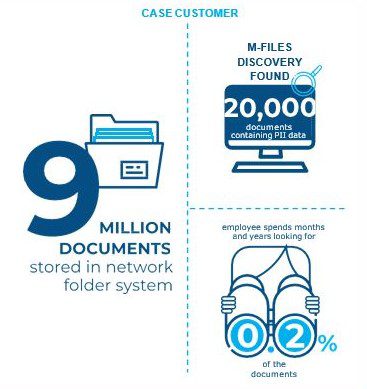What is workflow automation? Well, it’s not some high-tech process reserved for giant corporations. Any business or organization can benefit from some form of workflow automation.
Workflow automation is, quite simply, the elimination of mundane manual tasks by automating them. This creates a consistent workflow that isn’t prone to human error. It also frees up time to focus on working your business instead of doing administrative tasks.
Types of Workflows
There are undoubtedly countless types of workflows that vary based on the needs of each business and organization. However, there are also some workflows that are common to almost every organization.
For example, making changes or updates to documents, getting those changes approved, and then filing the updated documents is a typical workflow. In a manual workflow, this can create a bottleneck by an inconsistent updating structure, failing to get updates approved in a timely manner, or simply filing the updated documents incorrectly.
An automated workflow solves these problems by making sure updates are structured properly, automatically forwarding them for approval, and getting them filed correctly, without the potential for human error in the process.
Think about a document that needs multiple approvals. Instead of one employee having to track down each person for a signature, each person can be immediately notified that the document is ready for approval. After approval, the document can automatically move on to the next step in the process. You can see how this would make everything move more quickly, leaving time for other important tasks.
Other workflows that benefit from automation are accounts payable, sending sales emails, onboarding employees and contractors, budget approvals, and more. Virtually any administrative task can be improved by workflow automation.
What Is Workflow Automation? A Collaboration Tool
Beyond just the day-to-day work processes that are simplified by workflow automation, employees benefit because it makes collaboration and communication easier.
Just as important as updating and getting approvals on documents, employees can update collaborative projects with ease, allowing everyone on the project to have the most up-to-date version instantly.
Documents are accessible in one place so no one has to worry they can’t remember where they saved it. If employees can do a Google search, they can do a quick document search and find it in seconds.
Employees can also take advantage of built-in communication tools that make it simple to work together even when they can’t physically be together. Of course, when collaboration is easy, it’s more likely to occur. This translates into higher quality work as well as employees who are happier.
Why You Need Workflow Automation
Overall, workflow automation results in faster, more consistent work output. This brings greater satisfaction to customers and employees alike. Automation means less chance of errors throughout the process and within the finished product.
This alone could give you the edge over your competitors.
Other benefits of workflow automation include:
- Higher data security
- Improved efficiency
- Increased productivity
- Reduced customer wait time
- Higher accuracy
- Fewer lost documents
- Better compliance
All these features translate into a higher ROI for your business while also saving resources and improving internal and external transparency. There is no downside to workflow automation!
If you’re ready to see how workflow automation can improve your business processes, schedule a no-obligation consultation. We’ll listen to your specific needs and determine the best system for your company.

Seeing is believing. When we show you a demonstration of how M-files adapts to your business, you’ll be ready to dive into workflow automation and watch your business get even better.






